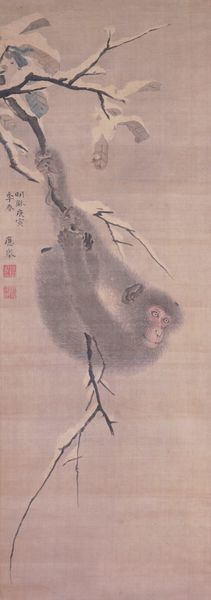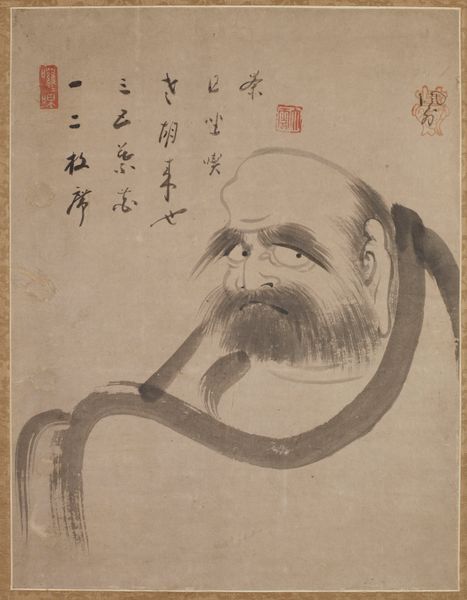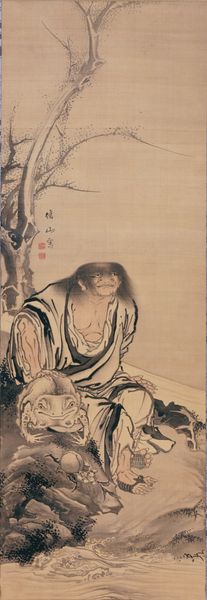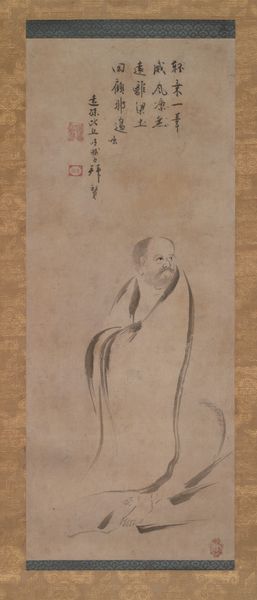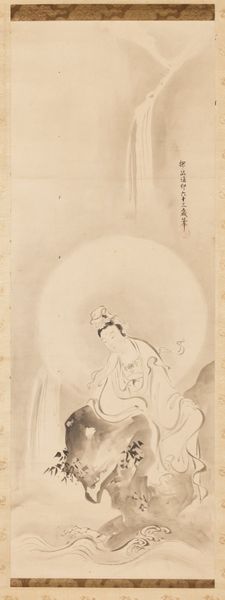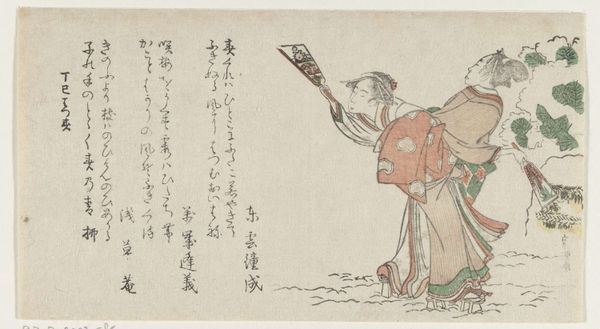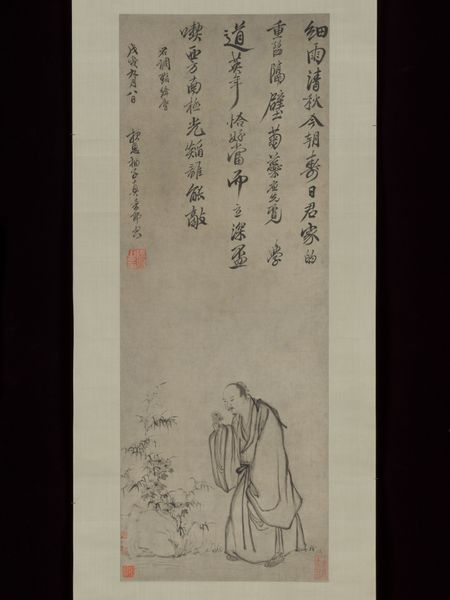![Chinese Immortals [one of a pair] by Hara Zaichū 原在中](/_next/image?url=https%3A%2F%2Fd2w8kbdekdi1gv.cloudfront.net%2FeyJidWNrZXQiOiAiYXJ0ZXJhLWltYWdlcy1idWNrZXQiLCAia2V5IjogImFydHdvcmtzLzk2ZjhmYWEwLTM5YWYtNDA3Mi05N2UxLWY0N2E4YzdhNThlMS85NmY4ZmFhMC0zOWFmLTQwNzItOTdlMS1mNDdhOGM3YTU4ZTFfZnVsbC5qcGciLCAiZWRpdHMiOiB7InJlc2l6ZSI6IHsid2lkdGgiOiAxOTIwLCAiaGVpZ2h0IjogMTkyMCwgImZpdCI6ICJpbnNpZGUifX19&w=3840&q=75)
coloured-pencil, color-on-silk, ink
#
portrait
#
coloured-pencil
#
color-on-silk
#
asian-art
#
ink
#
coloured pencil
#
orientalism
#
history-painting
Dimensions: 45 3/16 × 13 1/4 in. (114.78 × 33.66 cm) (image)70 1/2 × 17 1/4 in. (179.07 × 43.82 cm) (without roller)
Copyright: Public Domain
Editor: We’re looking at “Chinese Immortals,” one of a pair painted in 1804 by Hara Zaichū, using ink and color on silk. The vertical composition really draws my eye upward, following that wispy trail. What do you see in this piece that might unlock its meaning? Curator: Let us consider the composition, a deliberate arrangement where the subject's gaze dictates the viewer's trajectory. Notice how the figure occupies the lower portion, giving prominence to the ethereal smoke. This smoke, seemingly an exhalation, defies gravity, leading us towards an unidentifiable form at the apex. What significance might be attributed to this juxtaposition of earthly and celestial elements? Editor: It's fascinating how the line of sight becomes a compositional element. I hadn't considered how the figure's downward placement emphasized the negative space and the smoke’s upward movement. But the figure seems very human—is he actually an immortal? Curator: Ah, a pertinent question. Consider the application of ink; the controlled washes create a sense of depth and texture, especially within the subject’s hair and clothing, lending him a palpable, human presence. Yet, the vibrant colors applied to the silk are juxtaposed with more muted tones to show what the subject is observing, imbuing this “exhalation” with transcendence. How does the rendering of the subject as corporeal inform our reading of the immaterial elements? Editor: So, it's the contrast between the realistic details and the ethereal smoke that suggests immortality, rather than a literal depiction. That focus on formal elements like the handling of ink and colour creates meaning. Curator: Precisely. By analyzing the interplay between line, color, and composition, we decipher the artist's intent to transcend mere representation. A careful decoding of these intrinsic elements is pivotal in understanding the artwork. Editor: I will definitely be spending more time analyzing colour palettes. I now see that the meaning is deeply embedded in how the artist plays with those visual cues, beyond just the subject matter itself.
Comments
No comments
Be the first to comment and join the conversation on the ultimate creative platform.

